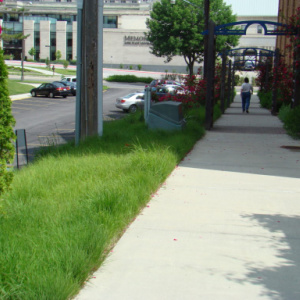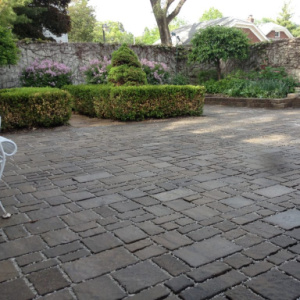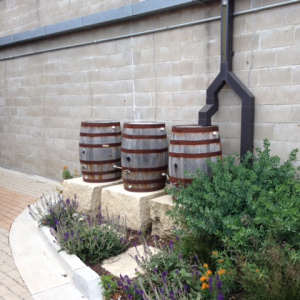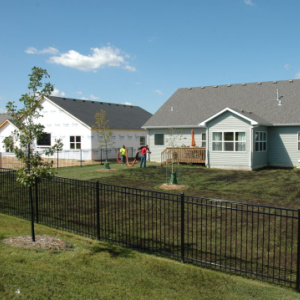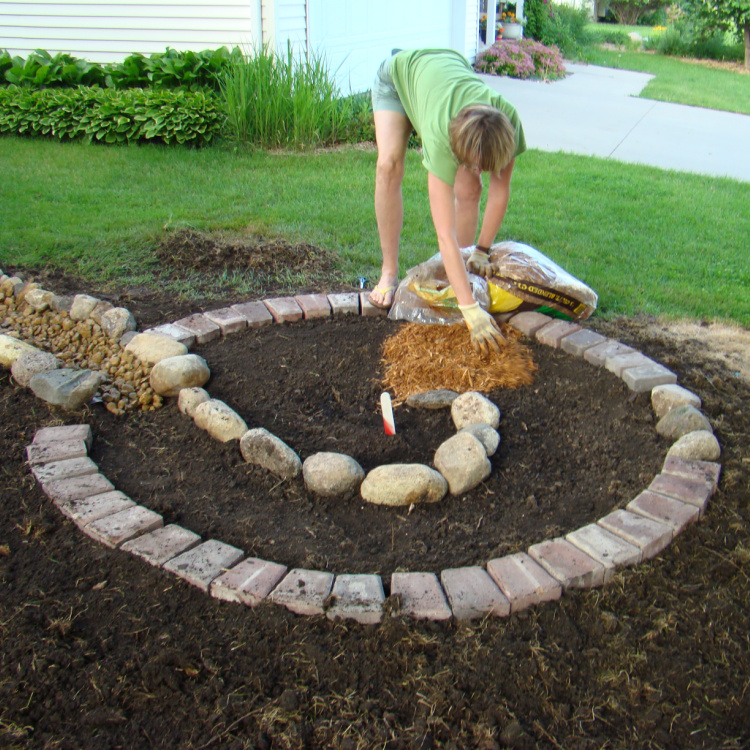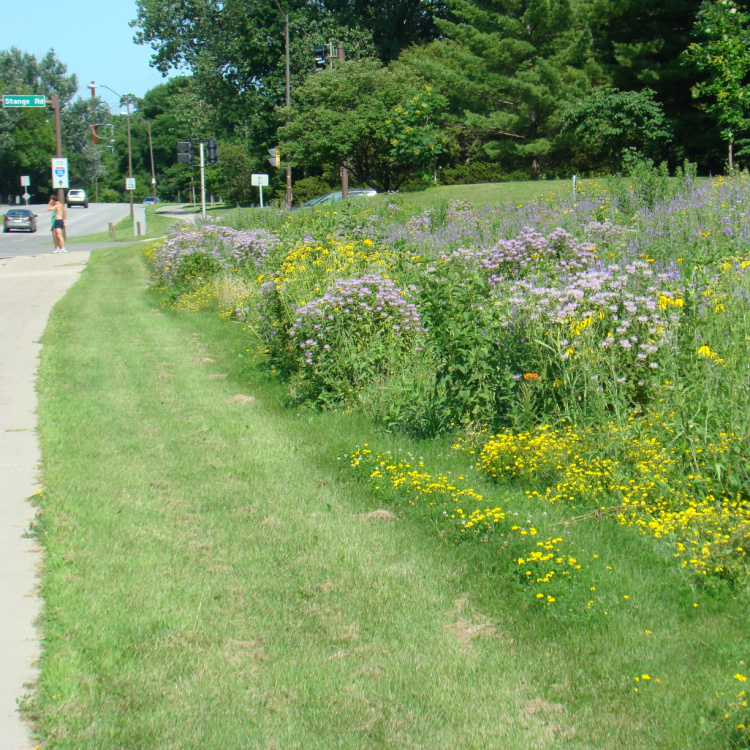“Rainscaping” is a is an approach to managing stormwater by mimicking natural processes, capturing rainwater where it falls before it becomes polluted runoff. These attractive landscape features look like regular gardens at first glance, but they’re designed to retain and infiltrate a specific amount of water from rooftops, driveways, or other surfaces.
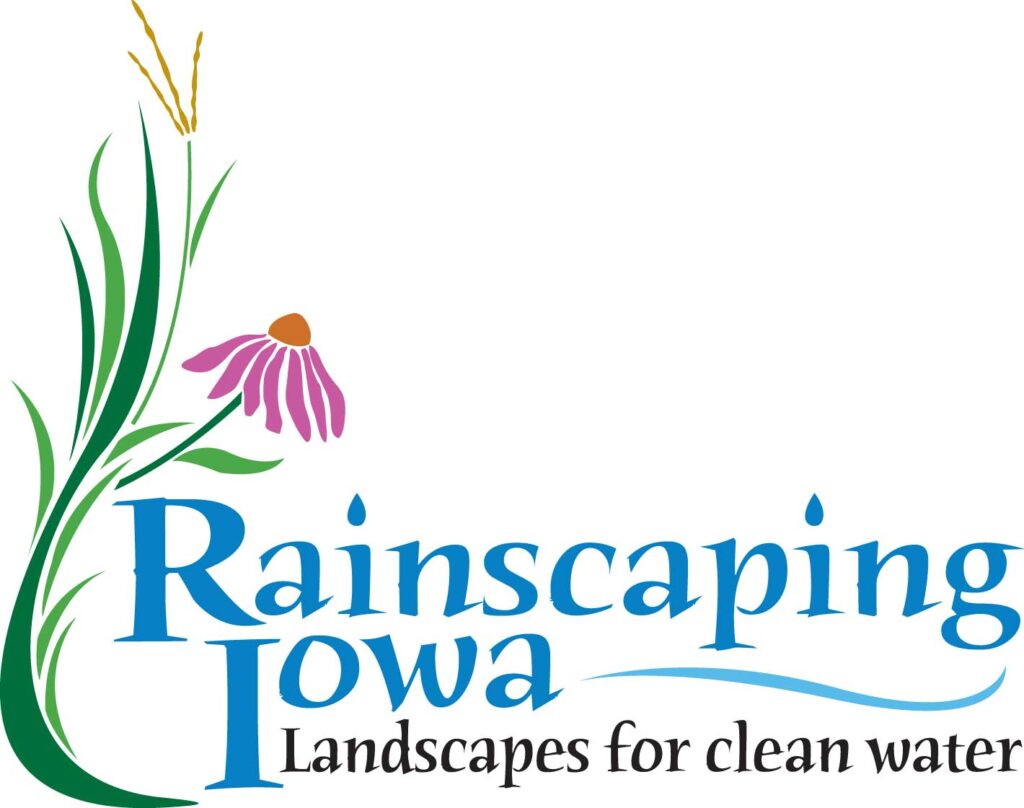
Why rainscape your property?
When rain falls on hard surfaces like roofs, driveways, and streets, it picks up pollutants before flowing into storm drains and local waterways. Rainscaping practices:
- Reduce maintenance needs compared to conventional landscapes
- Reduce flooding by slowing and capturing runoff
- Improve water quality by filtering pollutants
- Create habitat for beneficial insects, birds, and wildlife
- Enhance property appearance and value
Types of rainscaping practices
Rainscaping practices are designed to manage the “water quality volume” (the first 1.25″ of rainfall) that occurs frequently in Iowa.
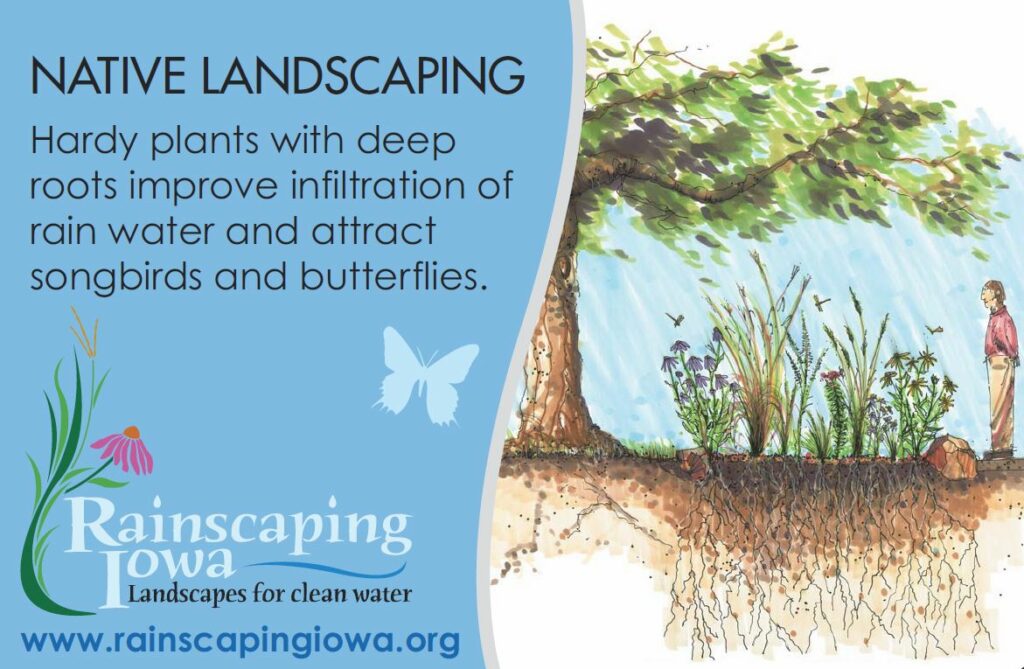
Educational signage
ISWEP and Polk County SWCD offer metal educational signs that can help explain your rainscaping practices to neighbors and visitors. Contact Iowa Prison Industries to order signs for bioretention cells, rain gardens, native landscaping, and other rainscaping features.
Local programs and resources
Several Iowa communities offer assistance for implementing rainscaping practices:
- Rain Campaign (Des Moines area): Provides information to help homeowners implement practices on their properties
- Love Our Waters (Iowa City, Coralville, North Liberty): Offers rebates for creating water-friendly lawns with fewer chemicals
- Iowa Green Streets: Promotes sustainable building practices including stormwater management approaches
Contact your local Soil and Water Conservation District for information about available resources in your area.


